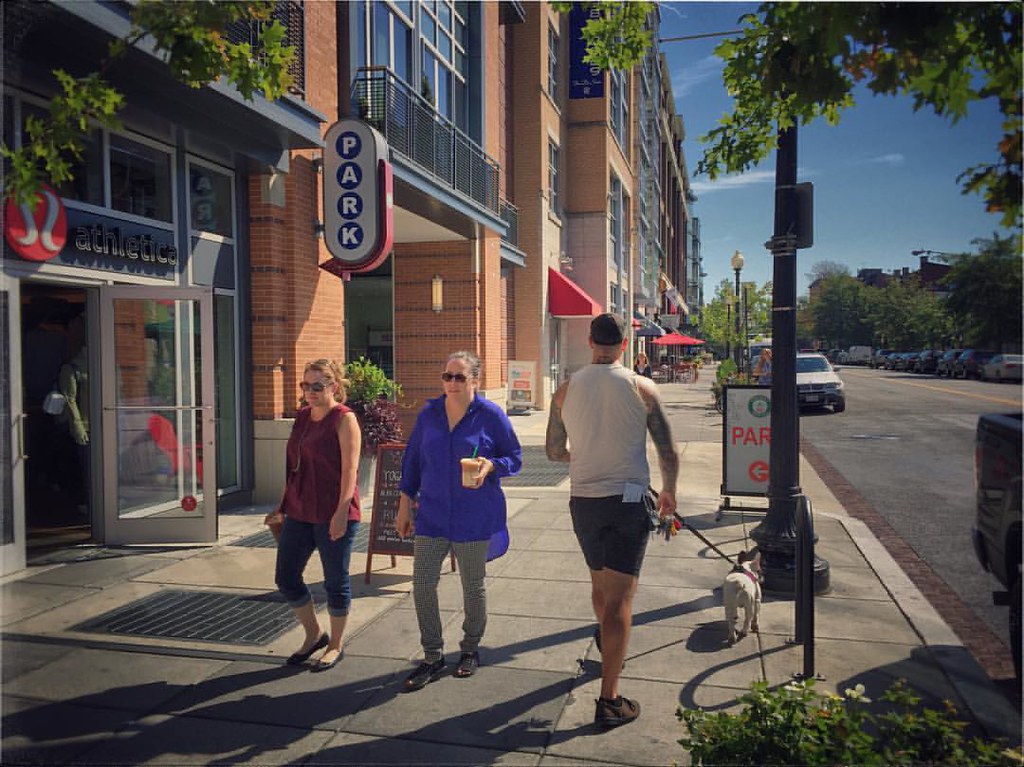Neighborhoods that score highly on the "Walk Score" metric are more likely to be disproportionately white, a new study finds — and it may be creating a troubling feedback loop that drives investment away from neighborhoods of color, and towards the communities that need it least.
In a provocative new paper, researchers Kate Lowe of the University of Illinois Chicago and Anna Brand of the University of California, Berkeley found that Windy City census tracts that were rated most highly by the popular real estate algorithm mapped almost exactly onto the census tracts with the highest share of white residents — and a literature review suggested that the same thing is likely true in other dense urban areas.

That's in part because, aside from some proprietary information about block and intersection density, the scoring system behind Walk Score focuses almost exclusively on the simple proximity of nearby amenities — and ignores things like pedestrian crash rates, the quality of pedestrian infrastructure or policy, and even what percentage of people actually walk rather than drive.
And it certainly doesn't get at how notions of "walkability" might vary between different groups, like whether a resident can actually afford the boutique or shop at the non-halal grocery store on the corner, whether their kids get bussed to the school across town rather than the one down the block, and whether they're subjected to jaywalking laws that disproportionately target people of color practically every time they step foot into heavily-policed neighborhood.
By ignoring those kinds of nuances, the researchers say Walk Score simply catalogs neighborhoods that have already attracted a high concentration of things like parks, restaurants, and shopping, regardless of who actually walks to them — and that developers "tend to locate [those things] ... in more affluent neighborhoods" anyway.
"To me, what Walk Score really is a measure of is destination concentration, and destinations are tied to investment flows," said Lowe. "And anything that measures investment flows in a landscape of structural racial inequity is going to reflect those inequities."
Moreover, Lowe and Brand say that Walk Score tends to give even more points specifically to areas with a lot of restaurants, bars, shopping, coffee shops, and other "spaces of consumption"; places of worship, though, aren't included at all, and corner stores may not merit extra points, even though the researchers point out that they "can be important food sources in some low-income communities."
Needless to say, higher wealth and higher consumption are both tightly correlated with whiteness in the United States, a phenomenon which the researchers refer to as racial capitalism.
And when added together with the universe of structural reasons why investment tends to flow towards wealthy, white communities whether they're walkable or not – and away from low-income, BIPOC neighborhoods even when they aren't built around automobiles — the researchers say that Walk Score may not be a meaningful measure of walkability, even as it steers more money towards the privileged neighborhoods that it's affixed with that label.
"We're not claiming that we don't like neighborhoods where we can walk to a bar or to get coffee," said Brand. "We're claiming that we have to be wary of these types of tools – and wary of their self-fulfilling prophecy."
Lowe and Brand acknowledge that Walk Score isn't always a direct proxy for whiteness outside of urban areas, especially in rural communities — not to mention exclusionary suburbs and exurbs that were deliberately built around cars alone.
And they also acknowledge that walkable neighborhoods should be seen as valuable – even if they doubt that simply pumping up the real estate value of a handful of white, walkable areas will somehow translate to more access to walkability for everyone else.
"I think there's a lot of urbanism that has a lot of faith in the for-profit market," added Lowe. "It has some parallels with YIMBYism's faith in the market to filter down. A market urbanism that suggests universal provision of walkable neighborhoods will fix inequities doesn't reflect the structural forces [in our cities] — and WalkScore, in particular, is about investment flows."
A better path
To get a better sense of which neighborhoods are actually walkable, Lowe recommends a more holistic approach, like the more-comprehensive method Urban Institute used in 2022 to grade the walkability of Washington, D.C. Brand particularly urges academic researchers to conduct similar analyses, rather than relying on Walk Score alone.
"It just doesn't get at the nuances and the histories of place," she added. "It doesn't understand how different places are valued by different [communities.]" said brand. "Our work is always to push back and be more critically engaged with things that are potentially impacting racialized difference in the cities where we live and work."
Of course, to actually achieve Walk Score's stated mission to "promote walkable neighborhoods" across America, we do need the real estate sector to value places where anyone can live and thrive without a car. To make those neighborhoods available to everyone, though, Lowe says we also need strong public policy that confronts the role that racial capitalism plays in all our lives — and especially in our built environment.
"I understand sometimes we need strategic messages for different partners," Lowe added. "But what are we doing when we use [WalkScore] as our rationale for walkability? Who is included and who is excluded [in that metric], given that we're in a very inequitable world, and Walk Score promotes the idea that higher WalkScore means higher property values? ... Destination proximity is only part of the picture, and destination proximity is highly raced. We need to be wary of celebrating places that are exclusionary through ranking systems like this."






